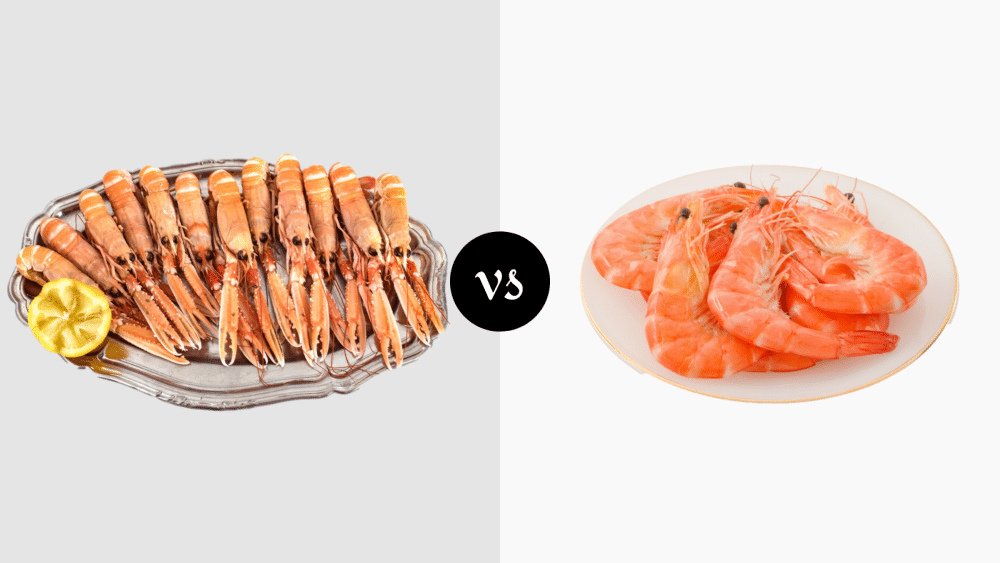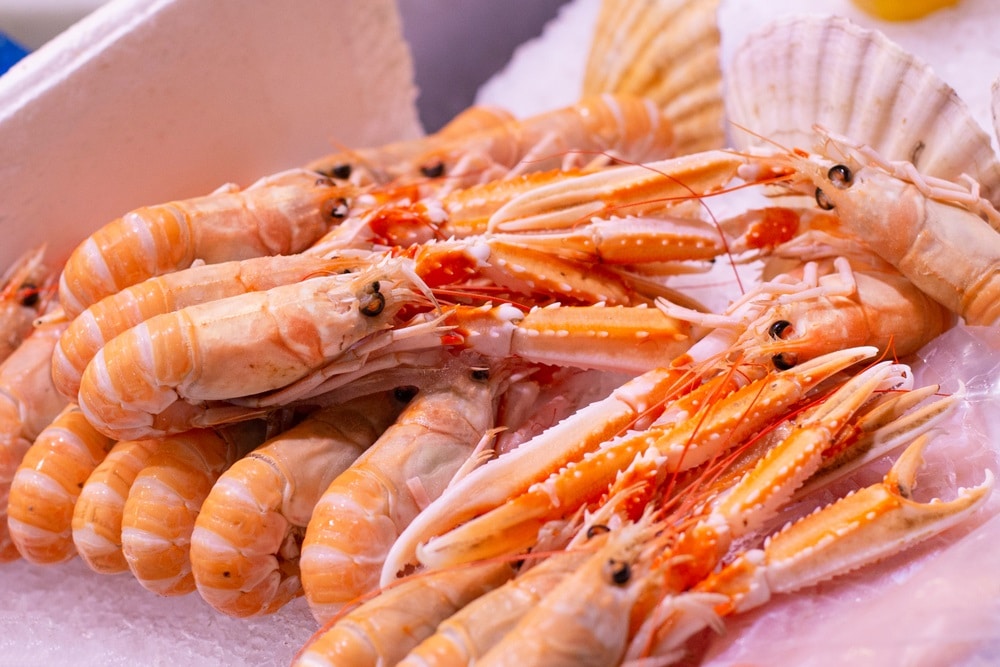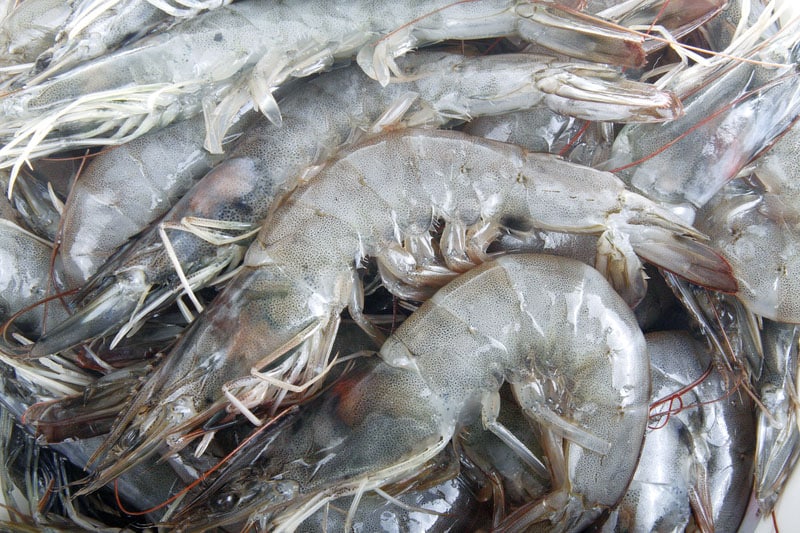
Seafood is one of the delicious food items, and crustaceans are the most loved aquatic animals. They are found in freshwater and saltwater bodies and are caught to be consumed as appetizers.
Langoustine and shrimps are two most scrumptious crustaceans with a savory and salty flavor. They are usually served with dips.
However, many people fail to differentiate between langoustines and shrimps, so we are sharing an in-depth comparison with you!
Langoustine vs. Shrimp Comparison
Comparison Table
| Features | Langoustines | Shrimps |
| Water bodies | Saltwater | Freshwater and saltwater |
| Harvesting | Mediterranean Sea and northeastern Atlantic Ocean | Asian countries |
| Color | Bright orange | Translucent or gray |
| Flavor | Rich and fishy | Sweet and tender |
1. Langoustine
Langoustines are related to lobsters but are also known as Norway lobsters and Dublin bay prawns.
They are commonly found in saltwater bodies, such as seas and oceans. They are usually harvested from the Mediterranean Sea and the northeastern Atlantic Ocean.
Appearance
The langoustines can be over ten inches and are bright orange in color. However, they can be extremely expensive as they are challenging to catch and are rare. The langoustines are perishable, and the storage is quite tricky.
It’s available in fresh as well as frozen form. They are popular for meat in claws and tails but make sure you purchase bigger ones (small ones don’t have meat).
Some of them have reddish-orange bands all over them, while the shells are ridged and spiny. The pincers and long antennae of the langoustines are usually equal in length to the rest of the bodies.
They are smaller as compared to shrimps but the appearance is similar. In addition, it has slim claws. Also, they are available all year round.
Taste
Langoustines are found in cold water, which is why the meat is firmer, sweeter, and whiter. In addition, they have a rich fishy flavor.
However, they can be extremely fickle and get spoiled pretty quickly if not stored properly. When cooked, the shell color is changed. There is meat in the claws and tail, which is white in color.
In addition to the meat, the entire body of langoustines is used for preparing soups and sauces. The texture of langoustines is similar to cooked shrimp.
There are different ways to prepare langoustines, which directly impact the flavor. First of all, they can be boiled in salted water and served with garlic mayo. However, the bigger ones can be prepared as lobsters – it will turn the bodies light pink.
Some people also remove the meat from claws and tails and sauté them. In addition, you can cut them in half and cook them on a plancha or a hot grill.
As far as the meat is concerned, the white flesh is lean, sweet, and juicy. However, the fresh langoustines have a better flavor as compared to frozen ones, but there is little to no aftertaste.
2. Shrimp
Shrimps are considered a type of shellfish, but it belongs to the crustaceans family. There is no skeletal frame or exoskeleton. When the shrimps are exposed to heat, they become vibrant and coral red in color.
However, before cooking, they are slightly translucent and gray in appearance. Asia is the biggest producer of shrimp, including Thailand, China, Bangladesh, India, Indonesia, and Vietnam.
Appearance
The shrimps are usually found in freshwater bodies, and the sizes range from one-quarter to jumbo. They are available in deveined and peeled form, which promises easier cooking. Such shrimps have their shells removed.
The shrimps are labeled small, medium, large, extra large, and jumbo on the packaging. Shrimps are extremely perishable, which means they have to be cooked or frozen immediately.
Shrimps have claws on two legs, and the shell overlaps on the legs – the overlapping shell also results in a bent shape of the shrimp.
The raw shrimp might have a limp upon touching, but cooking makes the meat plump and firm. Also, when you cook the shrimp, take them off as soon as the tail curls into a “C.”
Taste
Shrimps can add a tender, briny, and sweet flavor to whatever they are cooked with. There are different ways of preparing shrimp, including grilling, broiling, frying, poaching, sautéing, and stir-frying.
In case you want to grill the shrimp, it’s better that you leave the shell on as it prevents drying out. The shrimp shells add a lot of flavor to the broths and soups.
The shrimps have a mild and sweet flavor while the texture is tender. If cooked properly, the meat will have a bit of texture as well.
The shrimps are loaded with omega-3 fatty acids, astaxanthin, and zinc. They can be served as an appetizer with tarragon sauce.
Final Verdict
The bottom line is that langoustines are treated as a delicacy while shrimps are more affordable and readily available.
The langoustines are recommended for people who like rich fishy meat, while shrimps are suitable for people who want tender and sweet meat.

